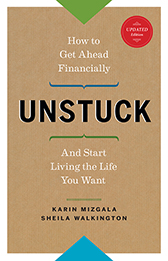By Tom Feigs, CFP®, CET
 As a fee-for-service financial planner it’s not unusual to be approached for a “quick” portfolio review. “Can you just look over my investments?” or “Can you tell me if I’m saving enough?” As much as it’s in my nature to want to help people, it would be unethical and unprofessional to advise someone without a comprehensive look at their finances and a clear understanding of their goals.
As a fee-for-service financial planner it’s not unusual to be approached for a “quick” portfolio review. “Can you just look over my investments?” or “Can you tell me if I’m saving enough?” As much as it’s in my nature to want to help people, it would be unethical and unprofessional to advise someone without a comprehensive look at their finances and a clear understanding of their goals.
The idea that investments are priority one is a by-product of how traditional financial advisors are paid – commission on investment sales. In fact, where and how to allocate your funds are decisions that should only be made after reviewing your personal situation and needs.
Imagine your financial journey. The destination is your retirement. Your personal framework (income, obligations, health, family commitments, risk tolerance, age) represents your vehicle and the road map is your various goals. Your investments and savings are the fuel to get your vehicle to your destination. You wouldn’t be looking for fuel before having a car and directions.
I work with individuals and couples that earn upwards of $150,000 a year, and because of the possibilities their income allows, they will all have their own set of priorities and cash flow needs for retirement. They also have various personal situations (for example, some people may have family in distant locations, others have no children, others have health concerns and still others have various complexities in their personal and business lives.) All this information is vital to the financial plan we create together.
There are other perils in making investment choices outside of a comprehensive financial plan. For example:
- If you aren’t clear on your goals, or haven’t considered all your needs, how do you know if you are over-saving or under-saving?
- You may feel guilt going on vacation if you aren’t sure you are saving enough for the future
- You may fret over market volatility unnecessarily
- One size fits all balanced funds may be appropriate to save for the long term but not for savings intended to send your teenager to University next year
- Fees – fees – fees. Are you aware of all the fees associated with your investments? How do you reduce these fees?
- Do-it-yourself investing becomes more of a game rather than a deliberate journey
 It’s important that we turn the conversation around, take the focus off investments and put it on planning first. An effective planning program takes time. I meet with my clients several times over a three to four month period to fully understand their hopes, dreams, challenges and financial situation. Once we have established goals we design a framework to reach them. Then we talk investing.
It’s important that we turn the conversation around, take the focus off investments and put it on planning first. An effective planning program takes time. I meet with my clients several times over a three to four month period to fully understand their hopes, dreams, challenges and financial situation. Once we have established goals we design a framework to reach them. Then we talk investing.
As a fee-for-service advisor I am, by design, not licensed to sell products and thereby not permitted by securities regulators to give advice on what specific stocks, bonds and mutual funds you should hold. I do guide clients in investment advisor selection and asset allocation balance (ETFs, stocks, mutual funds, bonds), along with long term tax planning advice, estate planning, cash flow and debt reduction help. Once we have created a life and financial plan together, my clients are able to make investment choices with confidence.
There is a lot of quality fuel available, but if you want to take control of your financial journey, you need a road-worthy vehicle and a detailed map first.
For help creating a plan, book a complimentary initial consultation with a Fee-for-Service Financial Planner or Money Coach.


